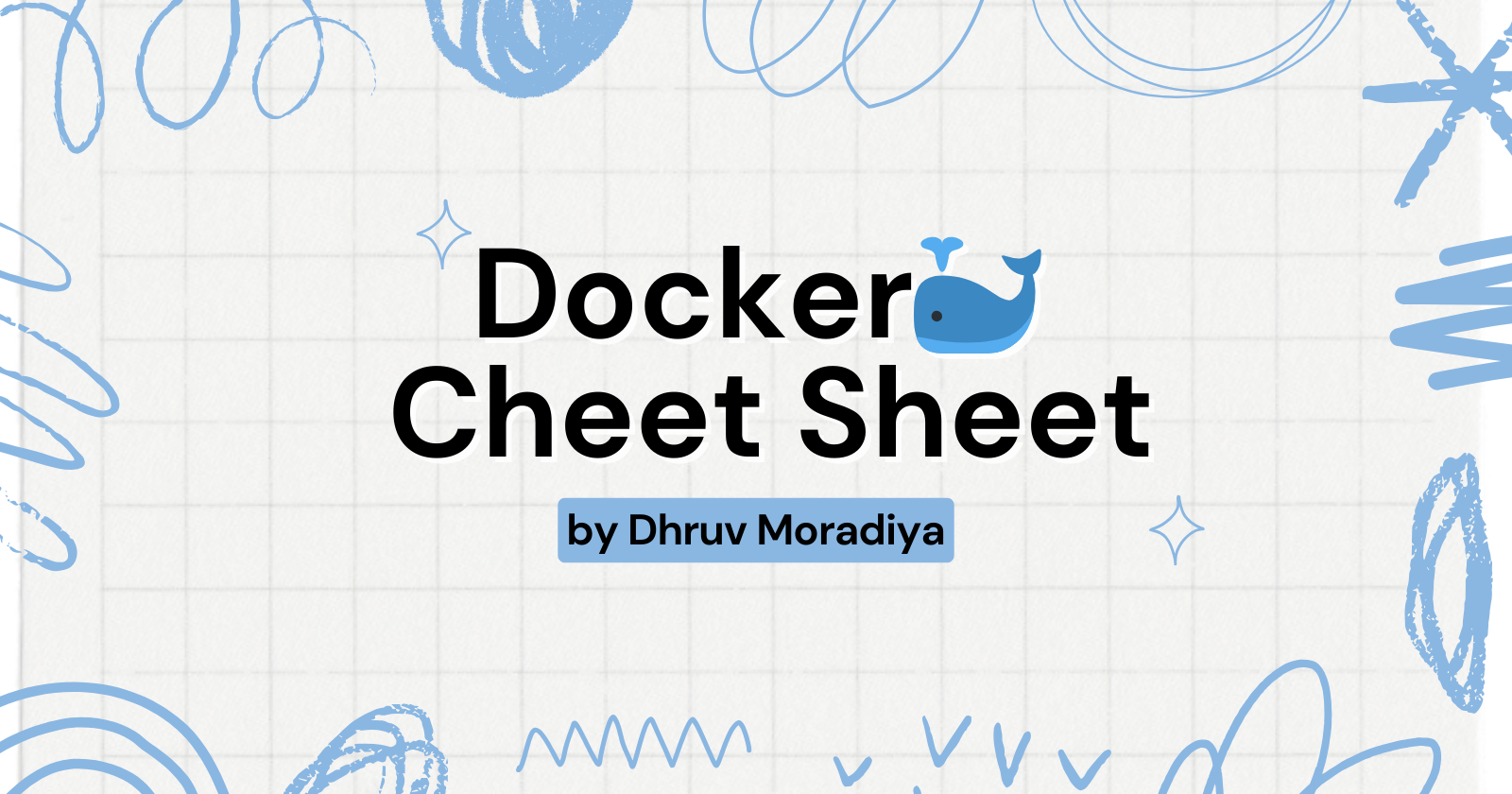Day 20: Docker Command Cheat-Sheet for DevOps Engineers
 Dhruv Moradiya
Dhruv Moradiya
Introduction: Day 20 of #90DaysOfDevOps 🗓️ has arrived! After several hands-on sessions with Docker, I’m excited to share a comprehensive cheat-sheet covering the essential Docker and Docker Compose commands. Whether you’re diving into containerization for the first time or need a quick reference, this guide will help you manage containers like a pro. 🐳✨
Bonus: For easy access and sharing, I’ve created a GitHub repository with the cheat-sheet!
GitHub Repository: Cheat-Sheet for DevOps Engineers
Why Docker is Useful (In Simple Terms)
Docker is like a portable app environment that keeps everything an application needs in one place, making it run consistently across different computers. Here’s a simple and complete list of commands to help you master Docker!
Docker Commands Cheat-Sheet
🚀 1. Basic Commands for Everyday Use
These commands help you get started with Docker, like pulling images (the base file of a container) and starting/stopping containers.
🔍
docker --version
Check which version of Docker is installed.🌐
docker pull <image>
Download an image (app package) from Docker Hub.
Example:docker pull nginxImagine this as downloading an app installer. Here, "nginx" is a web server image that will be used to create containers.
▶️
docker run <image>
Start a container from an image.
Example:docker run nginxThis is like launching an app you downloaded—now the web server runs inside a container!
🛑
docker stop <container>
Stop a running container.
Example:docker stop my-nginxUseful if you need to pause a running app without deleting it.
🖼️ 2. Image Management (Your App Library)
Think of images as pre-configured app templates. These commands help you organize, create, and remove these images.
📜
docker images
See all images you have downloaded.🛠️
docker build -t <image-name> <path>
Create an image from a Dockerfile (a recipe for your container).
Example:docker build -t my-app .This creates an image from a Dockerfile, a script with instructions on how to set up your app.
🗑️
docker rmi <image>
Delete an image you no longer need.
Example:docker rmi nginxIf you’re done with an app version, delete it to save space!
🌐 3. Networking Commands
When containers need to “talk” to each other, these commands help you set up networks so containers can connect.
🌐
docker network ls
List all available networks.➕
docker network create <network-name>
Create a custom network for containers.
Example:docker network create my-networkThink of this as setting up a virtual network that your containers can join.
🔗
docker network connect <network> <container>
Connect a container to a network.
Example:docker network connect my-network my-nginxThis lets the "my-nginx" container communicate with others on "my-network."
Docker Compose Commands Cheat-Sheet
Docker Compose lets you define and run multiple containers at once. Imagine needing a web server and a database—Docker Compose starts both with one command.
▶️
docker-compose up
Start all services defined in your docker-compose.yml file.
Example:docker-compose upLike turning on a workspace with all the apps needed for your project.
🛑
docker-compose down
Stop and remove containers, networks, and volumes set up by Compose.📜
docker-compose ps
List services defined in the docker-compose file.
Real-Life Example of Docker & Docker Compose:
Let’s say you’re creating an online shop with a web server and a database (e.g., PostgreSQL). You could use Docker Compose to start both the web server and the database with one simple command, making setup fast and consistent!
Example docker-compose.yml:
version: '3'
services:
web:
image: nginx
ports:
- "8080:80"
db:
image: postgres
environment:
POSTGRES_PASSWORD: example
To start both services, simply run:
docker-compose up
Now both the web server (for your shop) and the database (to store data) start at once. No need for individual commands!
Why Keep a Docker Cheat-Sheet?
This cheat-sheet is a go-to for keeping Docker commands at your fingertips. Whether you’re launching containers, managing images, or connecting services, this will save you time and make Docker simpler.
Conclusion:
Wrapping up Day 20 of #90DaysOfDevOps with this Docker command cheat-sheet! 🎉 Bookmark it for easy access, and if you have any tips or favorite commands, let me know in the comments below. 🚀 Happy Docker-ing!
Subscribe to my newsletter
Read articles from Dhruv Moradiya directly inside your inbox. Subscribe to the newsletter, and don't miss out.
Written by
